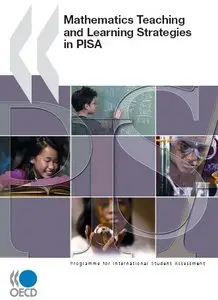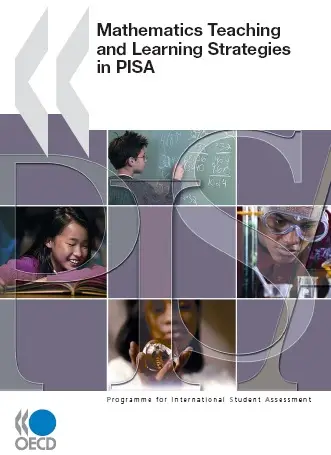Mathematics Teaching and Learning Strategies in PISA
OECD | 23 Sep 2010 | ISBN: 9264039511 | 180 pages | PDF | 2 MB
OECD | 23 Sep 2010 | ISBN: 9264039511 | 180 pages | PDF | 2 MB
This report offers policy insights and stimulates new research to complement and further develop the recent OECD Teaching and Learning International Survey (TALIS) and the upcoming PISA 2012 assessment, which will again focus on mathematics. The report aims to identify instructional practices and learning strategies that contribute to increased achievement in mathematics and general knowledge. It then explains how these strategies may be related to different countries’ school system structures.
In addition, this report may be of interest to teachers, educators and officials within national and local educational authorities responsible for the professional development of teachers or for programme development, as well as members of school boards and parent advisory bodies.
Table of contents
Foreword
Executive Summary
-Main messages
-Overivew of the report's approach
-Organisation of the report
-References
Reader’s Guide
-Abbreviations used in this report
-Technical definitions
-Symbols for missing data
-Further documentation
Chapter 1. Overview and Rationale for the Study
-Overview of PISA
-Aim and audience of this report
-Background of this report
-Definition and relevance of teaching and learning strategies
-Early research on teaching and learning strategies
-The Carroll model as a theoretical framework
-Key teaching and learning variables
-Control variables
-Other variables
-Overview of the analytical approach
Chapter 2. Features of Teaching and Learning
-Introduction
-Factors describing teaching and learning
-Allocation and use of time
-Student learning strategies and preferences
-Teaching strategies and climate
-Student perceptions of the learning environment
-Summary: A profile of mathematics teaching and learning
Chapter 3. Are Students’ Perceptions of their Mathematics Teaching and Learning Related to Mathematics Performance?
-Introduction
-Reporting the results
-How much performance variation is due to school differences and how do a range of factors contribute to this variation?
-The measured effects of antecedents to learning included in the analytical model
-The measured effects of tecahing and learning in the analytical model
-Teaching strategies
-Highlights of the analytical results
Chapter 4. Summary and Implications for Further Research
-Introduction
-Background factors that provide the context for teaching and learning
-Student learning strategies
-Teaching strategies
-Conclusion
Chapter 5. Conclusions and Implications for Policy and Practice
-Overview
-Overarching issues
-Student learning strategies
-Teaching strateiges
-Conclusion
ANNEX A. Descriptive Statistics
ANNEX B. Correlations
ANNEX C. Bivariate and Multilevel Models
with TOC BookMarkLinks
More : You find here



